By Christopher R. Bartocci
Over the past several years the black rifle market has grown astronomically; not only due to political frenzy but for the love of the most popular rifle in the country. Many new manufacturers have surfaced – some of them to get in on the large amount of money to be made on the popularity of the black rifle and others who simply love the weapon and want to get into the business. There are good and bad manufacturers out there. What separates them is mostly where they get their parts from as that is going to determine whether their rifles work or not.
In 2009, Chris Kurzadkowsi made an AR for his son who was going through SWAT training. He then made ARs for other members of the SWAT team. Then, in 2010, he got his licenses and opened up Battle Rifle Company.
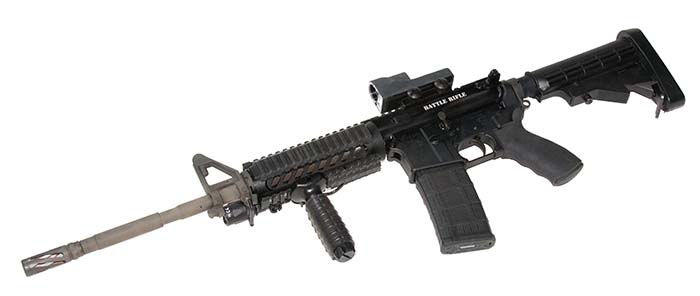
Battle Rifle Company debuted at the 2012 SHOT Show. There, Chris introduced his standard lines of rifles. In 2013, the company again attended the SHOT Show as well as the annual NRA meeting.
With all these different Black Rifle manufacturers something has to set each of them apart from the other. Battle Rifle Company has many areas where they stand out: Every rifle is assembled by an armorer. There is no production line. Battle Rifle Company manufactures their own design flash suppressor, which eliminates 98% of the flash according to Battle Rifle Company. All of the barrels are cryogenically treated to increase the life of the barrel. Each rifle is custom tuned to run optimally. Every rifle has a rail of some sort on it. Every rifle is equipped with back up sights. Each rifle comes with a CProducts steel magazine. However upon request they can be provided with a PMag or CAA magazine. Each trigger is polished giving a trigger pull from 4 1/2 to 5 1/2 pounds. Also what is referred to as rapid reset springs are added to increase the speed of follow up shots. The customer has options of stock assemblies such as the Damage Industries Enhanced Combat System Stock, Magpul stocks, Chaote M4 stock and Enhanced M4 stock to name a few. Depending on the model, the barrels are manufactured by Ballistic Advantage, Green Mountain, DSS or Blackhole Weapons. Every mag well is currently inspected with numerous manufacturers of magazines to insure compatibility with all commercially available magazines.
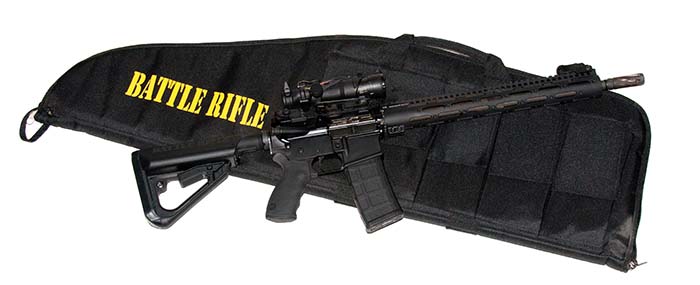
The BR4
The BR4 was the first weapon tested in the Battle Rifle Company lineup. This is a basic patrol-type carbine. It was received with a rubber butt pad that slid over the rear of the standard stock assembly. This particular rifle was shipped with a detachable carrying handle. It was equipped with a one-point sling adapter on the rear of the receiver extension plate. The pistol grip was an Ergo Grip. The rifle had a standard rail assembly and the Battle Rifle Company flash suppressor.
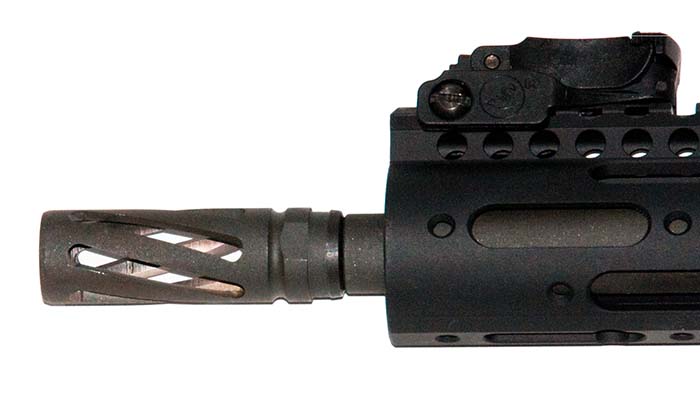
BR15
The BR15 has a 16-inch barrel with the M203 step cut on it. The barrel has a 1/7 inch rifling twist. This is optimal for projectiles from 62 to 69 grains in weight. The rifle also came with a black carrying case. This particular rifle has a 16-inch barrel but also available is a 14.5-inch barrel with the Battle Rifle Company flash suppressor permanently welded in place.
The fit and finish of this rifle was quite good. The receivers were tight and the trigger was crisp. Some accessories were added by the author. The rifle was tested with the new Magpul M3 magazines. This included the 20-round, 30 with and without window and the new 40-round magazine. This is the newest generation in the evolution of what this author feels is the best magazine available anywhere for this platform. The new magazines have a flat floor plate allowing easier stacking in a magazine pouch. The new M3 features a stainless steel magazine spring, four-way anti tilt follower, pop-off Impact/Dust Cover and no tools are required for disassembly for cleaning. The low profile ribs and aggressive front and rear texture provide positive control of the magazine, which help with compatibility of double and triple magazine pouches. The easy to disassemble standard flared floor plate provides drop protection and aids extraction from the magazine pouch. A paint pen dot matrix has been added to the bottom panel of the magazine body for easy marking by the end user for magazine identification. The geometry of the M3 makes it compatible with non-standard M16/M4-type magazine wells including the HK416, M27 IAR, British SA80 and FN SCAR. The M3 incorporates a new material technology and manufacturing process that increases strength and durability in critical areas. The new 20-, 30- and 40-round magazines were tested in the BR4.

The Manta rail systems were chosen for this rifle as well. Manta extreme rail panels are a new technology in rail protection and gripping technology. Manufactured from the same material as M1 Abrams tank treads, this material is easy to grip whether your hands are wet, muddy or whatever condition may come. Molded into the rail panels are several metal clips that enable the rail to grab positively even improperly made rails. The manta grip sleeve was mounted over the forward vertical pistol grip. The pressure pad from the flashlight mounted on the rail was slipped into the sleeve on the vertical pistol grip cover. This not only protects the pressure pad but makes it much easier for the shooter to actuate. These same panels were adopted on the new M27 IAR manufactured by H&K for the Marine Corps. Manta rail sections are also designed to cover wire from various devises to keep them out of the way and from getting snagged on trees or any other obstacle.
The optic chosen was the Trijicon RX01 reflex sight. This has a 6.5 MOA amber dot, which brings pinpoint accuracy and allows the shooter to shoot with both eyes open. The sight has a 24mm objective. The illumination source is both a tritium lamp as well as fiber optics located in the front of the sight. The body of the sight is cast A357. The sight came with a polarizing filter. This is the same one used by SOCOM and part of the SOPMOD program.
The ammunition used for testing was U.S. M855 ball. The shooting conditions were less than optimal. It was 109°F in the Nevada desert with high winds. More than 300 rounds were fired out of the BR4 with no malfunctions. It should also be noted that there was blowing sand on the rifle as well. Targets were shot at close range due to the optic being a 1x CQB sight. The rifle shot right where the dot in the optic was once zeroed. The M3 PMags dropped free once the mag catch was depressed. The 40-round PMag worked flawlessly. The BR4 is by all means suitable as a patrol or self defense rifle.
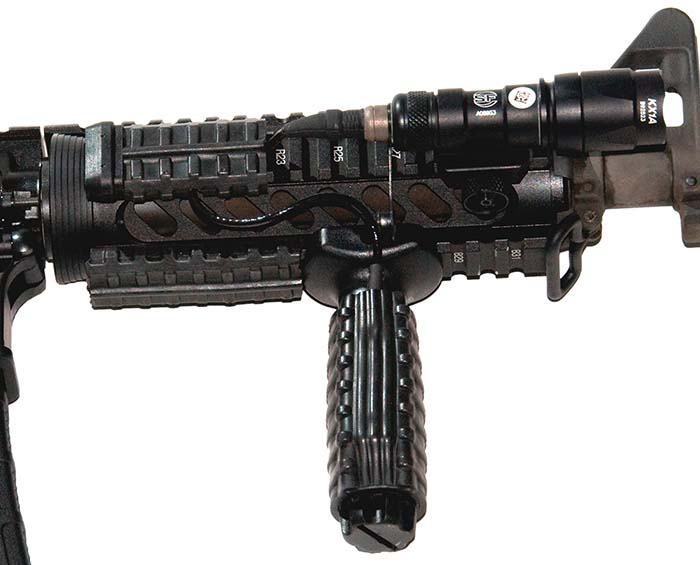
The BR15 LIT (Light Infantry Tactical)
The second rifle provided for testing was the BR15 LIT with a 16 inch barrel. This differed from the standard BR15 in that first it had a nickel boron coated bolt carrier group. This finish claims to be easier to clean and require little to no lubrication. The stock provided was the Damage Industries Enhanced Combat System Stock. The rifle has an aluminum Midwest Industries free floating handguard with removable rail sections. This rifle came with A.R.M.S., Inc. #71 polymer folding front and rear sights and a 1-point sling adapter attached to the receiver extension end plate. This also had the Ergo Grip pistol grip. This rifle also has a 1/7 inch twist and equipped with the Battle Rifle Company proprietary flash suppressor.
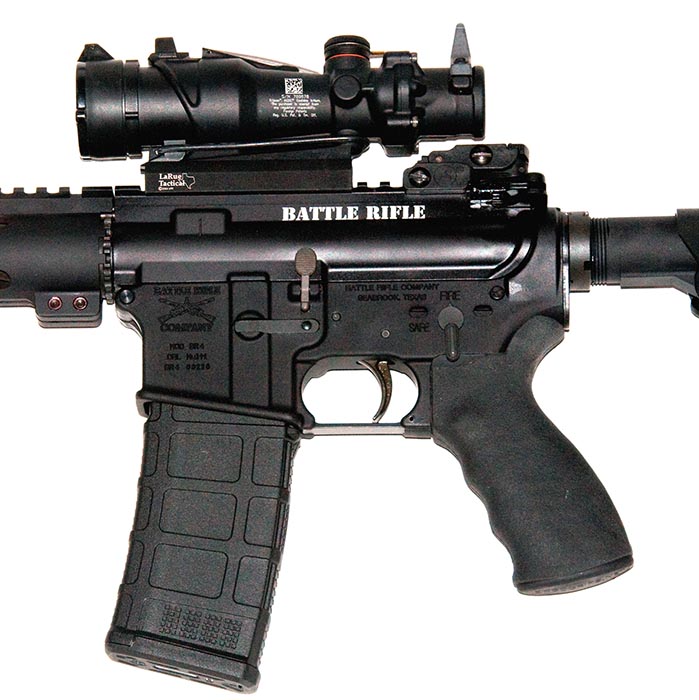
The optic chosen for this rifle was the Trijicon ACOG TA31RC0-M4CP – this is the U.S. Marine issue ACOG sight. This is a 4×32 mm scope manufactured from a 7075-T6 aircraft grade aluminum forging; the same as the rifle receivers. It is powered by both a tritium lamp and a red fiber optic the goes right over the top of the scope. The reticle is a red. The brightness of the chevron is self regulating based on the ambient light collected from the fiber optic. However, soldiers have been known to cover portions of the fiber optic with tape to dim them up. The rifle came with a Killflash cover to prevent reflection off the lens as well as lens covers.
This rifle was also tested with M855 ball ammunition in the scorching windy desert heat. More than 100 rounds were fired with no malfunctions of any type. Groups averaged between 2 and 3 MOA. I believe the ammunition and condition may have not brought out this rifle’s true capability. I believe with proper match ammunition, less wind and better shooting conditions the factory specified 1 MOA could be achieved.
Battle Rifle Company is new to the industry and is making low production numbers of hand crafted rifles. There is plenty of business in this community to go around and they will certainly find their nitch. The rifles tested were an excellent quality and function perfectly. These rifles were accurate and well made.
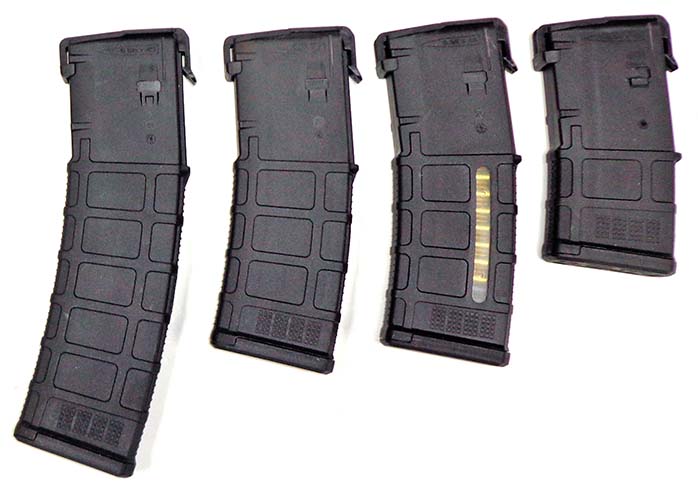
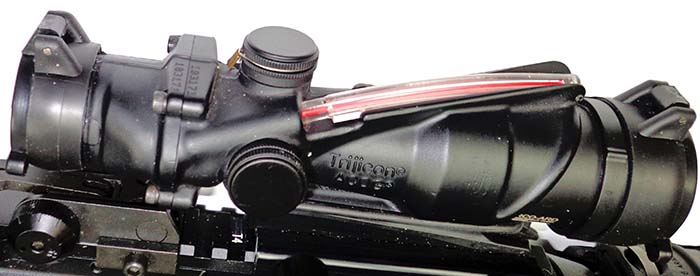
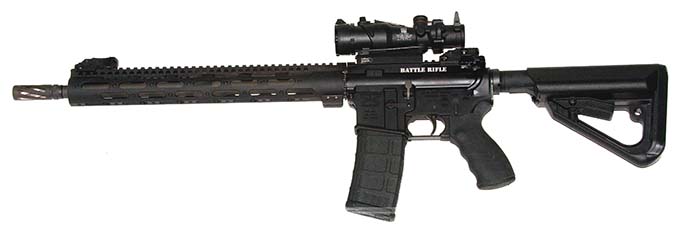
| This article first appeared in Small Arms Review V18N3 (June 2014) |












